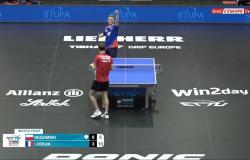The “Shoulder-Head-Shoulder” and “Shoulder-Head-Shoulder Inverted” patterns are often considered key trend reversal indicators in technical analysis. These patterns, visible on stock charts, promise a change in direction, either downward (ETE) or upward (ETEI). But what is their real efficiency in modern financial markets? Let us analyze their real success rates, beyond theory, to understand if these training courses hold their promises in practice.
So here is what we can say about the success rate of the inverted shoulder-head-shoulder pattern in trading:
Shoulder Head Shoulder Reverse ( Inverted)
Bitcoin graphic example (H1):
- The figures shoulder-head-shoulder reversed is considered one of the Chartist figures the most reliable To anticipate a bullish reversal.
- According to some sources, the success rate of this figure would be very high, with approximately 98% cases that result in a bullish exit.
- More specifically, in 63% cases, the price would reach the price objective calculated from the figure when the neck line is broken.
- Un pull-back (return to the neckline after the breakout) would occur in 45% of cases.
- However, it should be noted that these very optimistic figures must be qualified. Other sources indicate more modest success rates, around 60%.
- The reliability of the figure depends on several factors such as respect for proportions, breakage of the neck line, volumes, etc. Rigorous analysis is necessary.
- It is recommended to use this figure in addition to other indicators and analyses, rather than relying on them blindly.
In conclusion :
Although the reverse head-shoulder is considered a very reliable figure, its actual success rate is probably closer to 60-70% that 98% sometimes advanced.
It remains a useful tool but must be used with precaution and complement other analyzes.
__________________________________________________________________
Shoulder Tête-Epaule (ETE) :
Here is what we can say about the success rate of the figure-head-to-trading shoulder figure:
LVMH graphic example (Daily):
- The figures shoulder-head-shoulder is considered one of the figures chartistes most reliable to anticipate A lowering reversalbut its exact success rate is debated among technical analysts.
Here are the main things to remember:
- Some sources advance very high success rates, going up to 93% or 96%. However, these figures are probably exaggerated and do not reflect The reality of trading.
- In reality, the success rate is likely more modest. A quoted study indicates that the price objective is achieved in approximately 60% Cases for a classic head-toe shoulder.
- It is important to note that the shoulder-toe-spam is not A foolproof figure. Its only presence is not enough to guarantee a trend reversal.
- The reliability of the figure depends on several factors such as respect for proportions, breakage of the neck line, volumes, etc. Rigorous analysis is necessary.
- Many experienced traders recommend using this figure in addition to other indicators and analysis, rather than relying on it blindly.
In conclusion, Although the shoulder-head-shoulder is considered a reliable figure, its actual success rate is probably closer to 60% than the 90%+ sometimes claimed. It remains a useful tool but must be used with caution and in addition to other analyses.
NB : Comparatively, the classic head-and-shoulders (bearish) would have a slightly lower success rate, with around 60% of cases where the price target is reached.
⚠️ Shoulder -Head – Reverse Shoulder: Monitor volumes to the break of the neck line!!
- Always keep your head on trading shoulders, and don’t forget the « CGT »:
- Charts Never Lie.
- Greed is Bad.
- Trafting involves risks.
« PAKA PAKA! »
James D.Touati aka « The Wolf of Zurich »

James D. Toutai
The Wolf of Zurich








